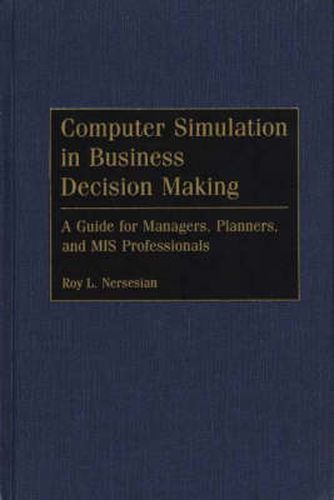Readings Newsletter
Become a Readings Member to make your shopping experience even easier.
Sign in or sign up for free!
You’re not far away from qualifying for FREE standard shipping within Australia
You’ve qualified for FREE standard shipping within Australia
The cart is loading…






This is a comprehensive guide to the incorporation of computer simulation in all levels of the planning function of an organization. The author aims to enable readers to gain an overall understanding of the potential role of simulation in planning, to apply simulation to their own particular needs and to translate planning concepts into computer instructions. He demonstrates that for manager, planner and programmer alike, simulation is not difficult in concept nor complicated to put into practice. The author argues that simulation is a necessary activity in a planning environment characterized by uncertain futures and rapidly changing conditions. The book is organized into separate chapters, each of which acts as a case study of an aspect in the use of simulation. The synopsis that begins every chapter provides the manager of a planning operation with an appreciation of the general application of simulation to one facet of planning. The chapters themselves focus on particular situations which might befall a planner within the general application of simulation to the planning process. Appendices designed to aid programmers who have not had much previous experience in setting up simulation programs follow each chapter and provide descriptive material and the applicable simulation program.
$9.00 standard shipping within Australia
FREE standard shipping within Australia for orders over $100.00
Express & International shipping calculated at checkout
This is a comprehensive guide to the incorporation of computer simulation in all levels of the planning function of an organization. The author aims to enable readers to gain an overall understanding of the potential role of simulation in planning, to apply simulation to their own particular needs and to translate planning concepts into computer instructions. He demonstrates that for manager, planner and programmer alike, simulation is not difficult in concept nor complicated to put into practice. The author argues that simulation is a necessary activity in a planning environment characterized by uncertain futures and rapidly changing conditions. The book is organized into separate chapters, each of which acts as a case study of an aspect in the use of simulation. The synopsis that begins every chapter provides the manager of a planning operation with an appreciation of the general application of simulation to one facet of planning. The chapters themselves focus on particular situations which might befall a planner within the general application of simulation to the planning process. Appendices designed to aid programmers who have not had much previous experience in setting up simulation programs follow each chapter and provide descriptive material and the applicable simulation program.